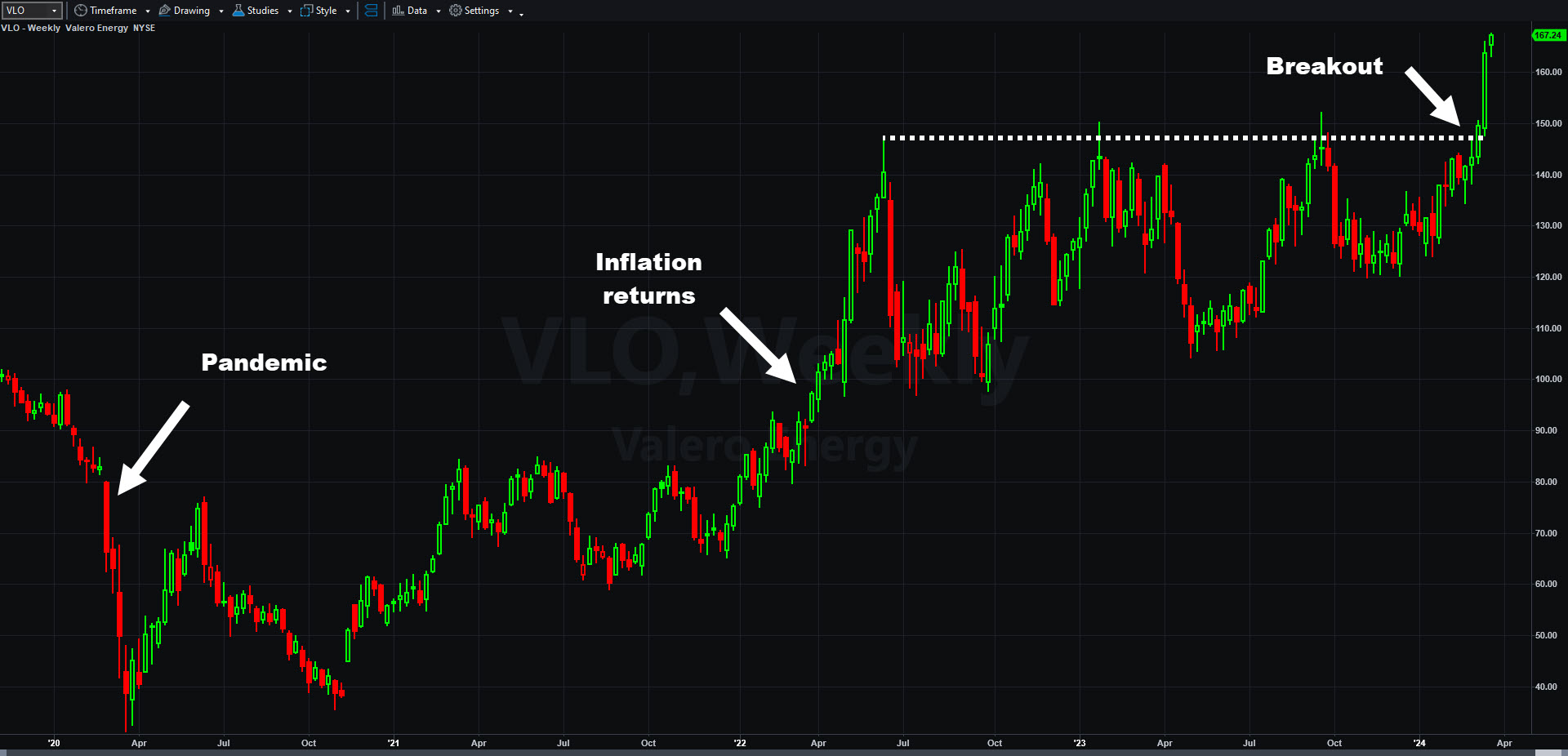Options Alert: Volume Surges in Oil Giant
BP has been clawing higher, and options traders are getting active.
Call toll-free 800.328.1267

The stock market has been optimistic about inflation since late 2023, but price pressures may be returning as the Federal Reserve considers interest-rate cuts.
The price of energy, shelter and materials have quietly risen in the last month. The increases follow months of stability, which may suggest they result from underlying fundamentals. That could be a headache for central bankers hoping that supply and demand were getting more favorable.
Here are some key areas that investors could be watching.
Crude-oil futures (@CL) have quietly hit their highest level since November. Gasoline prices have followed a similar trajectory, with GasBuddy showing a gain of about 15 percent since January.
Ukraine’s attack on Russian refineries last week triggered some of the move, but other forces also seem to be at work. Experts like Phil Flynn of Price Futures Group and Tom Kloza of OPIS have warned of a shortage in refining capacity. Bank of America analyst Doug Leggate wrote of a potential “golden age” for refining companies like Valero Energy (VLO) in an upgrade last week.

Some other forces could potentially point to higher energy prices:
At least two other issues could emerge as potential inflationary drivers.
First, rents may be increasing again. Rent.com’s index of national average asking rents climbed 2.2 percent in February. It was the second straight monthly advance and the biggest increase since January 2023. Similar data from Yardi Matrix cited by Yieldpro.com show a similar trend.
This could weigh on sentiment because shelter accounts for over one-third of the consumer price index (CPI), and economists have mostly projected lower costs.

Second, lumber prices have started increasing again. This could remind Americans of the coronavirus pandemic, when sawmill closures and strong demand drove up building supplies. Lumber stabilized in late 2022 and 2023, but it’s now back above $600 per 27,500 board feet.
Copper, another key material used in construction and manufacturing, also hit an 11-month high on Monday. The metal gained after China reduced smelter output. There have also been strikes at mines in Peru and Panama that account for about 3 percent of global production.
In conclusion, investors and the Fed have believed that easing inflation would allow interest-rate cuts later this year. Much of the information in late 2023 and early 2024 supported that hope. However, some recent data may point in a different direction.
Security futures are not suitable for all investors. To obtain a copy of the security futures risk disclosure statement visit www.TradeStation.com/DisclosureFutures.